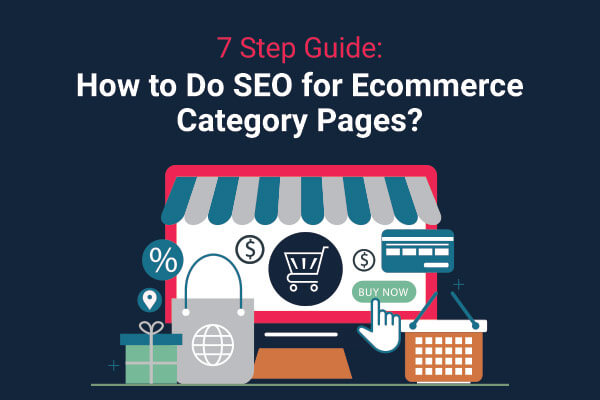Category pages are primarily keyword-specific pages. These are based on the significant keywords that consumers search the most.
When it comes to doing SEO for category pages, it’s quintessentially difficult.
Ecommerce SEO Tutorial to Get More Free Search Traffic
It is because of the less text displaying capacity of category pages on eCommerce platforms. Still, we have a lot of scopes to do SEO of category pages with these factors –
1) Don’t Underrate The Metadata
SEO Toronto experts suggest, “Do not underrate Metadata. The most influential ranking factor can take your rankings to the top. It is responsible for fetching search queries to your website. Thus, it sets a keyword theme for your Metadata.”
Metadata includes ‘Page Titles’ and ‘Meta Description’. Both these things get room in the site’s HTML code. These can be optimized by accessing the CMS.
Some Rules To Remember While Writing Meta Description And Page Titles
-
Meta description must not exceed more than 160 characters.
-
A page title must be between 30 to 60 characters.
-
Both meta descriptions and page titles should be relevant to the matter written in the blog and article.
-
Don’t use big words where you can use symbols. For example, consider hitting “&” from your keyboard instead of typing “and”.
-
Write short but catchy lines in meta descriptions.
-
Page Titles must highlight the benefits of reading your blog or article. For example: “Be Beautiful You – Trigger Hair Regrowth In 5 Easy Steps”
4 eCommerce SEO Techniques for Beginners (Ranking Your Products and Getting FREE Google Traffic)
2) Work On Headings
Make sure that you’re going right with headings. Use H1, H2, and H3 wherever necessary. It’ll help the search engine to understand the connotation of your content.
For example, H1 passes a message the entire content revolves around what’s written in H1 tags. H2 & H3 are for headings and subheadings, respectively. Besides polishing the headings of your content, it is quintessentially important to be correct with bullets or numbering.
Some Points To Consider While Working With Headings
-
The H1 tag must include the focus or primary keyword.
-
The H2 and H3 tag may have LSI keywords.
-
It is not necessary to embed all the H2 & H3 tags with keywords.
-
Don’t force keyword embedment. Don’t force it, if they aren’t fitting in.
-
The text in the heading tags mustn’t exceed more than 50 characters.
3) Mixture Of Text, Graphics & Videos
The category pages mustn’t be filled with TEXT, TEXT and TEXT. Users will get bored, and the bounce rate will surely increase. But if your eCommerce category pages come out to be a mixture of textual, graphical and video content, the users will be convinced to spend more time on your pages and make an informed purchasing decision.
Don’t Miss Considering These Points
-
Since these are category pages, it is suggested not to use much text. Keep it limited!
-
The graphics must include a clear and high-resolution product image.
-
Don’t use heavy-sized graphics, or they’ll increase the site load speed.
-
Only and only consider including videos if they won’t affect the site load speed.
-
Don’t make graphics and videos text-oriented. Include minimal text. If you want to display information in text, consider writing a blog.
-
The text must be rich with keywords. (Not stuffed)
-
Keep it in mind – Users don’t want to reach lengthy text. So make sure to keep your content to the point.
Read Also – 20 Top Bloggers Share Their Blogging Success Secrets
How to Double Website Traffic in Less Than 6 Months (eCommerce SEO Case Study)
4) Work On Link Texts
Many of us have seen these texts as anchor texts – click here, learn more, get more information etc. But these are meaningless anchor texts. Google doesn’t consider these effective since they do not convey the proper information about the link.
Some Points While Working On Anchor Texts
-
They must’ve text relevant to links. For example: If the link is about Gold Jewellery, then the anchor text must be related. It can be – Gold Jewellery, Discounted Gold Jewellery, or Trending Gold Jewellery.
-
The anchor text mustn’t be too long. You can’t have a paragraph as an anchor text. It can be a word or a line. Not more than that.
Read Also – 15 Ways to Create Amazing Customer-centric Content to Boost Your Sales and Generate Revenue
5) Enhance Category Navigation
For users, an eCommerce website is all about navigation. Users must scroll a lot to reach the product matching their requirements and search intent. Category navigation isn’t only about going up and down on a particular page. It also includes search filters. To ensure eCommerce category pages do not disappoint users, you must work on the search bar meticulously.
Few Points To Remember While Optimizing the Search Bar Of Category Pages
-
Work on Keywords. Come up with a wholesome list of keywords that can satisfy a particular query.
-
Make sure to use a combination of keywords – Focus Keywords, Latent Semantic Versions of Keywords.
6) Make Wise Use Of Header & Footer Links
Adding navigation-enhancing links to the header and footer helps a lot. It is the most effective strategy to convince users to spend more time on your website.
Some Points To Remember While Including Links In The Header & Footer
-
Do not include links in every eCommerce category page’s header and footer. It may make your page over-optimized for search.
-
Only use header and footer links to the quintessentially valuable category and subcategory pages.
-
Pages must be included based on keyword research and mapping.
7) Build External Links To Category Pages
External links are essential to building credibility for the eCommerce category and subcategory pages. Based on backlink profile, Google will decide whether you are a trusted eCommerce services provider.
Few Points To Remember While Creating A Backlink Profile
-
You can’t create backlinks on any and every website. Don’t value quantity over quality. Consider making backlinks at niche-relevant sites.
-
Keep on checking your backlink profile. If you have accidentally created backlinks on fraud, niche-irrelevant or unethical sites, you must disavow those links, or you’ll find your site’s reputation in big trouble.



















